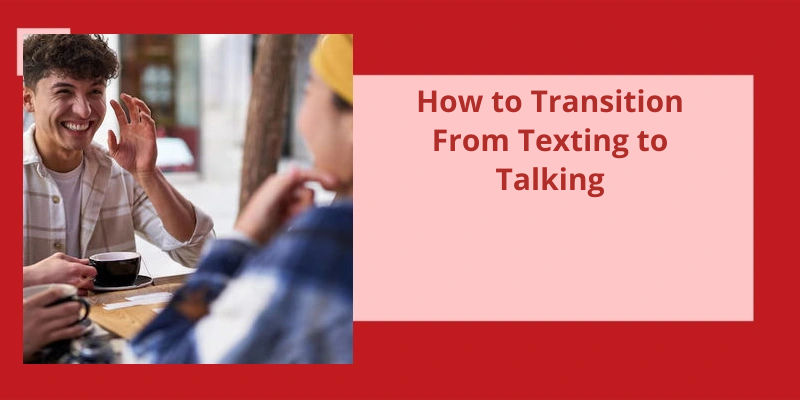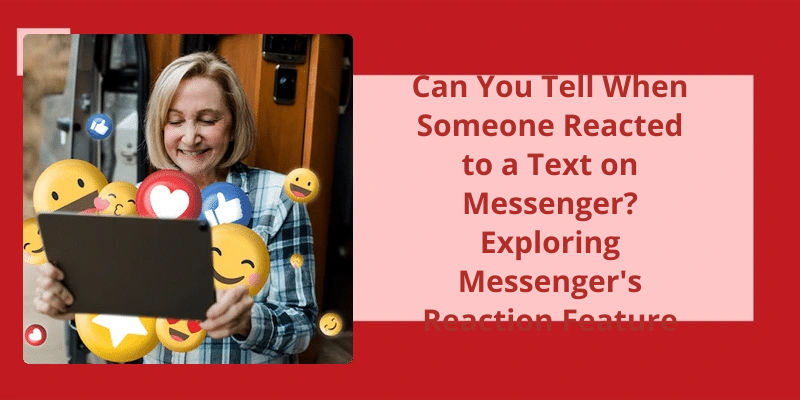In today's digital age, it’s become increasingly common for people to rely on texting as a primary mode of communication. However, there are instances where texting may not be the most effective way to connect with someone, especially when it comes to building a close and meaningful relationship. If you find yourself wanting to transition from texting to talking with someone special, it’s important to communicate your desires and intentions clearly. Take the opportunity when you're next together to express how much you value personal interaction and the significance of hearing their voice. By establishing that you only use texting for practical purposes or to arrange physical meetings, you can emphasize the importance of keeping your connection strong through genuine conversations. It's essential to convey your desire to deepen your bond by bridging the gap between virtual and real-life interactions. In doing so, you can nurture a more intimate connection that goes beyond the limitations of text-based communication. So, if you're wondering how to navigate this transition, open up and express your longing for more personal interaction – and watch as your relationship evolves and flourishes.
What Is the Talking Stage of Texting?
The talking stage is a unique phase in modern dating that occurs after you’ve been introduced to someone but before officially dating them. In this stage, communication mainly takes place through talking or texting, and it can last for days, weeks, or even months. It serves as a crucial bridge between initial acquaintance and a potential romantic relationship.
During the talking stage, individuals have the opportunity to get to know each other on a deeper level. They may engage in long conversations, share personal stories, and discuss various topics. Texting becomes a primary means of communication, enabling people to express themselves comfortably and at their own pace. This allows both parties to determine if they’ve compatible interests, values, and goals.
While texting is a convenient form of communication, it’s essential to transition to talking sooner rather than later. So, how can you smoothly make this transition? One effective strategy is to suggest a phone call or video chat. By hearing each others voices or seeing each others faces, you can establish a stronger connection, as verbal and non-verbal cues play a significant role in building intimacy and understanding.
When the transition happens, try to maintain the same level of enthusiasm and engagement you’d while texting. Actively listen and respond to what the other person is saying, showing genuine interest and curiosity. Maintain an open mind, allowing the conversation to flow naturally. Remember, the goal of this transition is to create a stronger connection and better assess your compatibility beyond the realm of texting.
By making the shift from texting to talking, you’re taking a significant step towards turning a potential relationship into a more meaningful connection. It allows you to gauge how well you communicate, understand each others personalities, and build a foundation for a potential romantic relationship.
Knowing when to switch from texting to calling can greatly improve your communication with others. While texting is convenient for simple greetings or making quick plans, calling is more suitable when you want to have a meaningful conversation or need to convey your emotions effectively. Recognizing these situations can help you decide the best mode of communication and enhance your connections with others.
When Should I Switch From Texting to Calling?
When should I switch from texting to calling? This is a question that often arises in the world of modern communication. As a general rule, it’s recommended to call when you want to hear your dates voice, when you’re upset, or when you plan on having a conversation that may last for a few minutes or longer. Hearing the voice of someone you’re interested in can bring a deeper level of connection and understanding to your interactions. It allows you to gauge their tone, emotions, and reactions in real time, leading to a more meaningful conversation.
On the other hand, texting serves it’s purpose in certain situations. It’s perfectly acceptable to send a text message to say hello, good morning, or good night. It’s a casual way to check in with someone and let them know they’re on your mind. Texting can also be useful for making specific plans that don’t require an actual phone conversation. For example, if you’re arranging a meeting time and place with a friend, a quick text message can suffice.
In the early stages of a relationship or when getting to know someone, texting can be a comfortable and convenient way to communicate. It allows for more time to think about your responses and can help ease any potential nervousness or anxiety. However, there may come a point where transitioning from texting to talking becomes necessary for deeper connections to form. When you feel a desire to truly connect with someone, to share your thoughts and feelings in a more personal and intimate way, it might be time to pick up the phone and make a call.
How to Navigate the Transition From Texting to Calling in Dating and Relationships
Navigating the transition from texting to calling in dating and relationships can be an important step towards building a stronger connection. It’s common for people to start by exchanging text messages, but transitioning to phone calls can help create a deeper level of communication.
One way to initiate the transition is by mentioning it casually in your text conversations. For example, you can say something like, “It would be great to hear your voice. Would you be open to chatting on the phone sometime?” This shows your interest in taking the conversation to the next level.
When you do make the leap to phone calls, it’s important to be present and engaged in the conversation. Eliminate distractions, choose a quiet environment, and actively listen to your partner. Engaging in phone conversations allows you to gauge someone’s tone, inflection, and overall communication style, which can help you better understand each other.
Another tip is to be patient with the transition. Not everyone feels comfortable jumping straight to phone calls, so give your partner the space and time they need. If they’re hesitant, suggest starting with a short call and gradually increasing the duration as you both become more comfortable.
Overall, transitioning from texting to calling can provide a more intimate and personal connection. It allows you to connect on a deeper level, share emotions, and have more meaningful conversations. By being open, patient, and respectful of each other’s boundaries, you can successfully navigate this transition and strengthen your bond.
Are you tired of constantly receiving text messages from the guy you’re interested in, but never getting a phone call? Don’t worry, you’re not alone in this predicament. It’s time to set the tone right from the beginning and let him know that you prefer phone calls over texts. Stop responding to his messages and instead, encourage him to call you for answers. Additionally, avoid discussing important issues through text and schedule regular phone dates to have meaningful conversations. Remember, texting should only be used as a temporary method of communication.
How Do You Make a Guy Call You Instead of Texting?
Transitioning from texting to talking can be a challenge in todays digital age. If youre wondering how to make a guy call you instead of texting, youre not alone. Many people crave more meaningful connections and prefer to hear someones voice rather than deciphering text messages. So, how can you encourage him to pick up the phone?
First and foremost, set the tone from the beginning. When you first start getting to know each other, make it clear that you value phone conversations. Express your preference for talking and be open about your desire to have deeper, more personal interactions. This will let him know that youre looking for more than just casual texting.
If he continues to only text you, stop responding to his texts. This may seem counterintuitive, but sometimes the best way to get someones attention is by giving them space. By not responding to his messages, you may pique his curiosity and make him wonder why youre not engaging in the usual texting banter.
Another approach is to directly tell him to call you for important conversations or answers. When he asks you a question over text, politely reply that youd prefer to discuss it over the phone. By making this request, youre letting him know that you value verbal communication and want to establish a deeper connection.
Additionally, emphasize the importance of safety by saying no to texting and driving. Let him know that you care about his wellbeing and would prefer him to call you instead of risking his safety by texting while on the road. This approach not only conveys your desire for phone calls but also shows your concern for his safety.
When discussing sensitive issues or conflicts, avoid having these conversations over text. Texting can often lead to miscommunication and misunderstandings, which can further strain the relationship. Instead, suggest having these discussions in person or over the phone to ensure better communication and understanding.
To encourage regular phone calls, schedule a specific time for phone dates. This way, both of you’ll have something to look forward to and will be more likely to prioritize phone conversations over text messages. Set aside a designated time each week to catch up, share stories, and deepen your connection.
Remember, use texting as a placeholder rather than relying on it as the main form of communication. Use it for brief updates or as a way to arrange phone calls. By limiting your reliance on texting, youll create a stronger foundation for meaningful conversations. The goal is to establish a balance and encourage more personal interactions, where you can truly get to know each other beyond the limitations of text messages.
Ways to Make Phone Conversations More Enjoyable and Engaging
- Use active listening skills and show genuine interest in the conversation
- Ask open-ended questions to encourage the other person to share more
- Share personal stories and experiences to make the conversation more relatable
- Use humor to lighten the mood and create a sense of connection
- Avoid distractions, such as multitasking or being on your phone
- Give compliments and positive feedback to make the other person feel good
- Try to find common ground or shared interests to discuss
- Be mindful of your tone of voice and speak clearly
- Allow the conversation to flow naturally and avoid interrupting
- Express empathy and understanding towards the other person’s thoughts and feelings
- End the conversation on a positive note and express gratitude for their time
Additionally, texting can be less time-consuming compared to holding a conversation in person. With texting, individuals can quickly send a message and continue with their other tasks without disrupting their daily routines. This convenience factor makes texting a preferred mode of communication for many.
Why Do People Rather Text Than Talk in Person?
Another reason why people prefer texting is that it enables them to communicate without any physical or social constraints. For those who struggle with social anxiety or find face-to-face interactions overwhelming, texting provides a level of comfort and safety. It removes the pressure of immediate responses and allows individuals to carefully choose their words and express themselves in a less spontaneous manner.
Moreover, texting offers a sense of control over the conversation. This control over ones image is particularly appealing to those who may feel insecure or self-conscious in face-to-face conversations.
In addition, technology has made texting incredibly convenient. With smartphones and messaging apps readily available, individuals can communicate with just a few taps on their screens, no matter the time, place, or distance.
Despite these advantages, transitioning from texting to talking in person is essential for building and maintaining meaningful relationships. While texting provides convenience and control, it lacks the richness and depth of nonverbal cues, such as tone of voice, facial expressions, and body language. These cues are vital for understanding emotions, context, and the true intent behind the words. Therefore, it’s important to find a balance between texting and face-to-face conversations to foster genuine connections and establish a deeper level of understanding.
Starting a conversation after a long hiatus of not texting can sometimes feel awkward or difficult. However, there are various effective ways to break the ice. One approach is to ask them questions about themselves, such as their plans, interests, or activities they enjoy. Engaging in a discussion about pop culture can also serve as a light-hearted conversation starter. Another option is asking them questions related to shared experiences or memories. Alternatively, you can skip straight to making plans or simply give them a sincere compliment to reignite the conversation.
How Do You Start a Conversation After Not Texting for a While?
Transitioning from texting to talking can sometimes feel daunting, especially if you havent been in touch for a while. However, there are a few conversation starters that can help you break the ice and get the conversation flowing. One option is to ask them questions about themselves. People naturally enjoy talking about their interests, so asking about their plans, interests, or activities they enjoy can be a great way to get them talking.
Another conversation starter could be to ask about something related to pop culture. Whether it’s a recent movie, TV show, or a viral video, discussing popular topics can help both of you feel more comfortable and engaged in the conversation. Additionally, asking them questions about their own opinions on these topics can deepen the discussion and provide more opportunities for connection.
On the other hand, if youre looking for a more lighthearted approach, consider asking them questions about yourself. For example, you could ask if they remember a funny or memorable moment you shared together. This not only shows that you value their opinion but also provides an open door for reminiscing and fostering a sense of nostalgia.
If you feel ready to skip the small talk and dive into more meaningful conversation, you could suggest making plans. This can be as simple as grabbing a coffee or going for a walk in the park. By proposing an activity, youre showing that you value their company and are genuinely interested in spending time together.
Lastly, don’t underestimate the power of a genuine compliment. Whether it’s about their appearance, a recent accomplishment, or their personality, a well-timed compliment can make the conversation feel warmer and more positive. Just be sure to keep it sincere and specific, as generic compliments may come across as insincere.
When it comes to starting a text conversation, there are various techniques you can use to keep the conversation alive. Sometimes, a conversation may start to fizzle out or become stagnant. However, by revisiting a previous topic, sharing something interesting, using humor, asking for a recommendation or opinion, requesting a phone call, complimenting the other person, or changing the topic, you can revive and save a dying conversation.
How Do You Start a Text Conversation Again?
Making the transition from texting to talking can sometimes feel challenging, especially if the conversation has been fading. Here are some tips to help you revive the conversation and make it more engaging. One effective technique is to revisit an earlier topic that you both found interesting. This can help reignite the conversation and bring back the enthusiasm.
Another way to save a dying conversation over text is by sharing something interesting or out of the ordinary. It could be a funny meme, a surprising fact, or a personal experience. This can grab the other persons attention and give them something to respond to.
Humor can be a powerful tool to revive a conversation. Sending a funny joke or a witty comment can lighten the mood and make the conversation more enjoyable. Laughter is known to break the ice and create a stronger connection between two people.
Asking for a recommendation is another great way to transition from texting to talking. Whether it’s a movie, a book, or a restaurant, getting the other persons opinion can spark a new conversation and show that you value their input.
Similarly, requesting their opinion on a certain topic can create a deeper conversation. It shows that youre genuinely interested in their thoughts and encourages them to share more.
If you feel like the text conversation has reached it’s limit, don’t be afraid to request a phone call. This can be a bold move, but it can also lead to a more meaningful and personal conversation. Hearing each others voices can make the communication more genuine and intimate.
Complimenting the other person is always a safe bet. Everyone appreciates a genuine and thoughtful compliment. It shows that youre paying attention and that you value their presence in the conversation.
Finally, if you feel like the conversation is stuck or going nowhere, changing the topic can breathe new life into it. This can be done by introducing a new subject, sharing an interesting article, or asking a thought-provoking question.
By revisiting earlier topics, sharing interesting content, using humor, asking for recommendations or opinions, requesting a phone call, complimenting the other person, or changing the topic, you can revive a dying conversation and build a stronger connection.
Tips for Maintaining a Text Conversation in the Long Term
When transitioning from texting to talking in a long-term text conversation, it’s important to keep a few tips in mind to maintain the flow and engagement.
Firstly, ask open-ended questions to encourage the other person to share more about their thoughts and experiences. This helps to create a deeper and more meaningful conversation.
Secondly, show genuine interest in the other person’s life by actively listening and responding with thoughtful comments. This helps to build rapport and keeps the conversation engaging.
Thirdly, be mindful of your response time to avoid coming across as disinterested or unresponsive. Responding in a timely manner shows that you value the conversation and the person you’re talking to.
Lastly, don’t be afraid to inject some humor or light-heartedness into the conversation. A little bit of playful banter can help to keep the conversation fun and enjoyable.
By following these tips, you can successfully transition from texting to talking and maintain a long-term text conversation that’s engaging and meaningful.
Source: How to Save a Dying Conversation Over Text: 15 No-Needy …
Conclusion
However, when it comes to fostering a deep and meaningful connection with someone, transitioning from texting to talking is essential. By expressing your preference for personal interaction and sharing your longing to hear his voice, you convey the importance of maintaining a strong connection. Let him know that texting should only serve as a tool for making arrangements or ensuring a time to talk, rather than as a substitute for genuine conversation. By prioritizing real-time communication and emphasizing the value it holds for you, you create a foundation for a deeper and more fulfilling connection.






